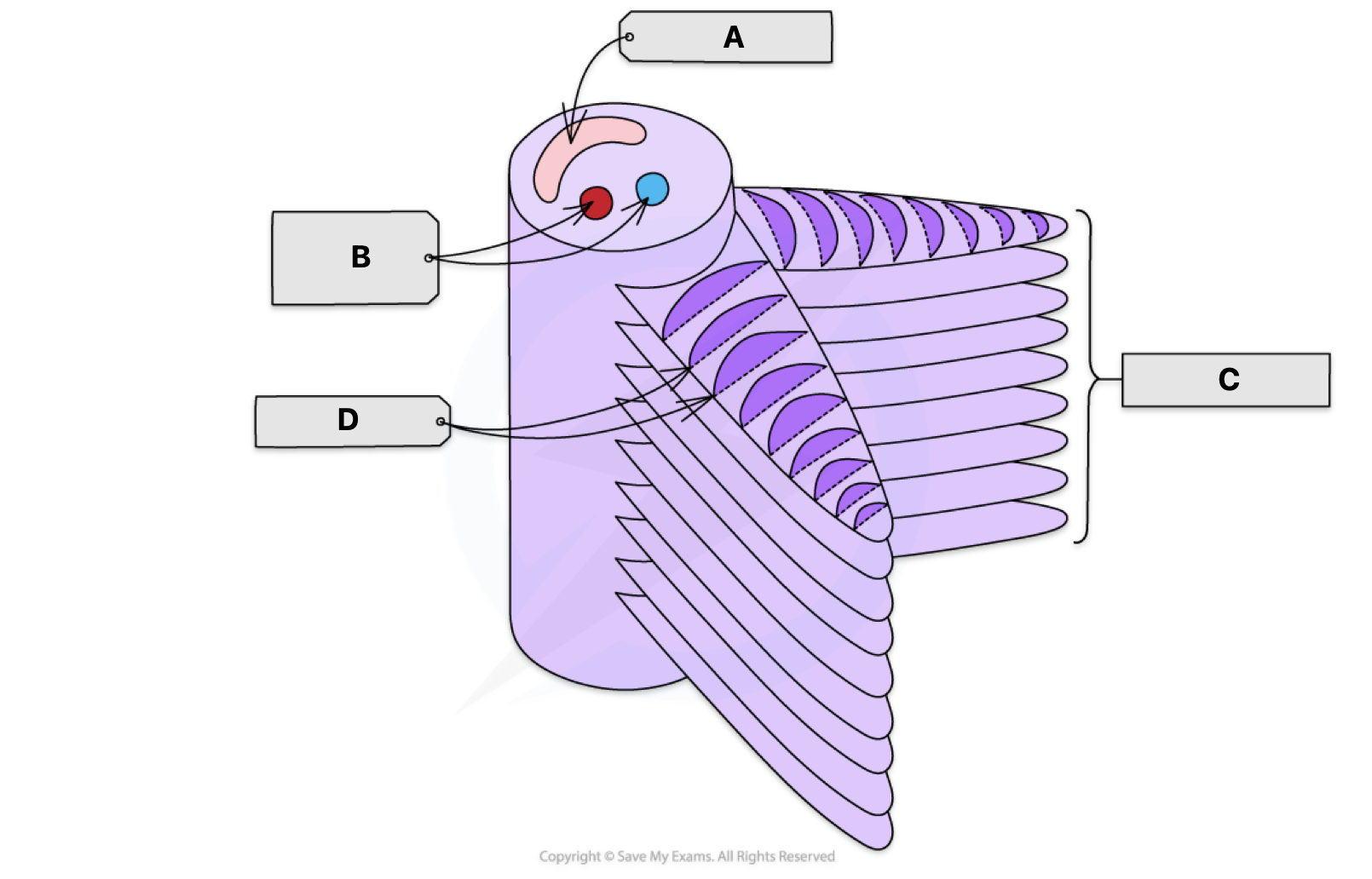Gas exchange
1/29
There's no tags or description
Looks like no tags are added yet.
Name | Mastery | Learn | Test | Matching | Spaced |
|---|
No study sessions yet.
30 Terms
Small organisms gas exchange
Simple diffusion is enough
Spiracles
Openings in the side of the body
Tracheae
Chitin lined tubes throughout the body of insnects for gas exchange
Tracheoles
Smallest tubes break off and contain fluid
Fluid in tracheoles
where gasses dissolve
sphincter
muscle that relaxes or tightens to open or close a passage in the body
why do spiracles close
reduce water loss
what is the point of air sacs
supply of air / oxygen
How are air sacs controlled in insects
Contraction of thoracic and abdomen
Bony fish
Scales - no exchange through surface
How many pairs of gills
4 pairs
Operculum
Hard bony flap which covers the gills
How do fish take in water
Operculum opens
Floor of mouth cavity is lowered
Pressure difference causes water to flow in
Water then forced over the gills when mouth Is closed and buccal cavity is raised
Countercurrent flow
Steep concentration gradient maintained due to the flow of blood in the opposite direction to the water
Goblet cells + location
In ciliated epithelial
Secrete mucus - trap particles
Ciliated epithelium + location
In trachea and bronchi
Hair like structures waft mucus upwards
smooth muscle
adjust size of airways
Elastic fibres in lungs during ventilation
stretch during inhalation
recoil to force out more air during expiration
Cartilage in trachea
C-shape provide support - allows oesophagus ti expand
Describe Inspiration
Intercostal muscles contract
Chest cavity up + out
Diaphragm contracts to flatten
volume increased + pressure decreased
Exhalation - relaxed
Intercostal muscles relax - ribcage falls under gravity
diaphragm relaxes
Decreased volume + Increased pressure
expiration - forced
Internal intercostals contract - ribcage down + in
Abdominals contract pushing diaphragm upwards
Volume decreased + pressure increased
why are the cuticle and epidermis transparent
to allow light to mesophyll cells
What happens when a guard cell becomes turgid
Guard cell changes to open stomata
How does a guard cell become turgid
Water flows into guard cell via osmosis down a water potential gradient due to increase of ions from products of photosynthesis and active transport using the ATP
Xerophytes
Plants adapted to survive in dry condition
Transpiration
Loss of water vapour from stomata / leaf surface
Squamous epithelium
Flat cells in alveoli that decrease diffusion pathway

Table A-D + function
Gill arch - support
Blood vessels
Filaments - gas exchanges through here
lamellae - increase surface area
Gill rakers
Filter out large particles